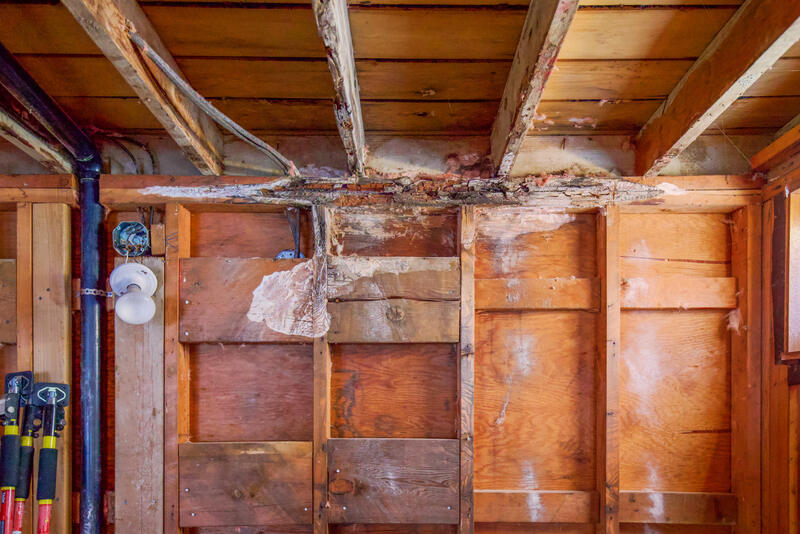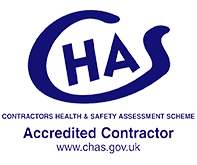
The Hidden Dangers of Dry Rot: Why Treatment is Essential
Dry rot is a common problem in properties that have experienced issues like rising damp, plumbing leaks or defective guttering. Finding dry rot is something that lots of homeowners dread and it can be detrimental to the condition of a property. If you’re concerned about dry rot outbreaks, it’s crucially important to seek professional assistance as soon as possible. A dry rot survey can help to identify wood destroying fungus and implement a treatment plan.
Below we have explored the hidden dangers of dry rot and highlighted why it’s crucial to seek dry rot treatment promptly from reputable dry rot experts.
What is Dry Rot?
Simply put, dry rot is a wood rotting fungi that commonly appears as white strands, sheet mycelium and fruiting bodies. Despite its name, it thrives in moist and poorly ventilated environments and can spread quickly. When dry rot spores are in the right conditions, they can cause timber to decay and weaken.
The Hidden Dangers of Untreated Dry Rot
Overlooking dry rot, especially in damp spaces, can cause several problems. Fungal growth in affected areas can result in;
-
Compromised Structural Integrity
Dry rot can compromise the strength of wooden beams, floorboards and joists. Over time, as the wood continues to deteriorate, it can lead to sagging floors, collapsing roofs and, in severe cases, the structural failure of a building. If left untreated, dry rot can compromise the safety of residents, leading to potential accidents and making the property uninhabitable.
-
Decreased Property Value
Aside from the risks to a building’s structural integrity, dry rot can significantly decrease the market value. Prospective buyers or tenants are less likely to invest in or occupy a property with dry rot issues, especially because it can be expensive to completely eradicate. This can lead to longer property vacancies and substantial financial loss, especially for landlords.
-
Spread to Other Building Materials
While dry rot primarily affects structural timber, if untreated, it can spread to non-wood materials. It isn’t uncommon for dry rot to penetrate through brickwork and mortar joints, further exacerbating the damage it causes. This can make treatment even more complex and costly, requiring specialised interventions beyond just addressing the affected wood.
-
Health Concerns
Although dry rot isn’t directly harmful, it can contribute to poor indoor air quality. The presence of rot can sometimes signify that there are underlying dampness problems too, which can lead to mould growth and other allergens that are detrimental to health and well-being. Prolonged exposure to mould can irritate respiratory systems, causing discomfort or even health issues.
Why Seek Expert Dry Rot Treatment?
If you notice any fungal growth in your property, it’s beneficial to contact a dry rot expert like Kenwood PLC. We provide comprehensive dry rot treatment plans that involve several key factors, helping to completely eradicate dry rot fungus.
- Accurate Diagnosis – Dry rot often gets confused with other forms of wood decay, most commonly wet rot. Misdiagnosis can result in ineffective treatments that waste time and money, so an initial assessment from an expert is crucial. Dry rot experts can correctly identify the type of rot and the extent of the damage, enabling an accurate treatment plan to be created for your property.
- Effective Treatment – While there are DIY treatments available, professional dry rot treatment guarantees thorough eradication of the fungus. This is key to ensuring it doesn’t reappear quickly if there’s another source of moisture. Professionals often use specialised equipment and chemicals that are more effective than over-the-counter solutions, providing a longer-lasting resolution to the issue.
- Preventive Measures – In addition to treating the existing problem, experts can provide guidance on preventing future outbreaks. This might include improving ventilation, addressing dampness issues and recommending protective treatments for wood. By following expert guidance, you can often avoid the recurring costs and hassles associated with frequent dry rot outbreaks.
Investing in Dry Rot Treatment
It’s fair to say that the consequences of untreated dry rot extend far beyond cosmetic issues. From severe structural damage to decreased property value, the risks can be substantial. Effective dry rot treatment isn’t just recommended, it’s essential to keep your property in good condition. If you suspect dry rot in your building, get in touch with our highly qualified team at Kenwood PLC today for dry rot treatment.
With many years of experience, we know how to eradicate both dry rot and wet rot, and we provide a cost-effective service to homeowners. We can provide you with a dry rot survey to identify the cause of the wood destroying fungus. At Kenwood PLC, we offer a wide range of treatments for dry rot and can provide comprehensive assistance, including floor replacements and re-plastering if required.


